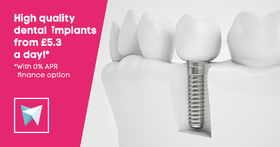I recently came across an intendedly helpful article from Good Housekeeping. The article has a rather helpful, but dated overview of at home tooth whitening products. Let me review this article briefly, drawing the still relevant information from it. It does need to be updated, however, to mention that peroxide based tooth whitening procedures are no longer approved by dentists, and are illegal in the UK.

The causes of discoloration
There are a number of reasons why teeth can become discolored. The first and foremost is diet. Certain foods, including cola, coffee, tea, red wine and berries or red fruits stain the teeth over time. Smoking also discolors teeth, turning them brownish.
The other main culprit is time. Over time, your teeth will turn more yellowish, regardless of how often you brush, floss or what you eat (you should still brush three times a day, though). It is also important to mention that while most tooth discoloration happens on the outside of teeth, your teeth can become discolored from the inside, from the dentine becoming discolored, or from the enamel becoming too thin, and thus the teeth will appear to be dentine colored, rather than the pearly white of healthy enamel. This discoloration often happens because of taking antibiotics for a prolonged period of time.
A good test suggested by the article mentioned above is to put a sheet of paper next to your teeth. If your teeth appear yellowish in contrast to the paper, then the discoloration is usually from without, if it appears greyish, this is usually due to discoloration from within the tooth structure. Whitening solutions only work for teeth discolored from the outside.
At home solutions
Due to peroxide now being off of the list of safe and prescribable medications for tooth whitening, new products are being made, but on the same basis as the old, peroxide based ones. That means that the same products will be available, except a new, safer substance will be the active ingredient, and not peroxide.
Strips are a fairly popular tooth whitening method. These are just what they sound like, little strips of polyethylene which have a peroxide content on their backside, which should be placed over the teeth for the amount of time recommended on the packaging (usually about half an hour), and then removed. The process needs to be repeated at given intervals (usually daily), for a set period of time (usually around a week).
The most frequented method, however, is the use of trays. The way they work is that a plastic tray, much like a tooth guard, is filled with a whitening gel, and then placed over the teeth. This can be done at the dentists office, or in the comfort of your own home. The active agents will than strip the stains from your teeth, and afterwards, just wash it away. Much quicker than the use of strips, the process also creates greater sensitivity, at least it did while peroxide was used in it.
There are also several toothpastes which claim to be whitening, but it is too early to tell if they actually do what they are supposed to, or if this claim is merely another clever marketing ploy. Many whitening toothpastes have small globules of harder material in them, which are supposed to scrub away stains and any detritus.
Some Good Advice
Before embarking on any at home whitening procedure, consult with your dentist, at least over the phone. He should know your dental history, and your specific oral condition, and will be able to tell you if the product you have chosen will work and have the desired effect, or if it can possibly damage your teeth.


 Call
Call Send
Send Find us
Find us Connect
Connect